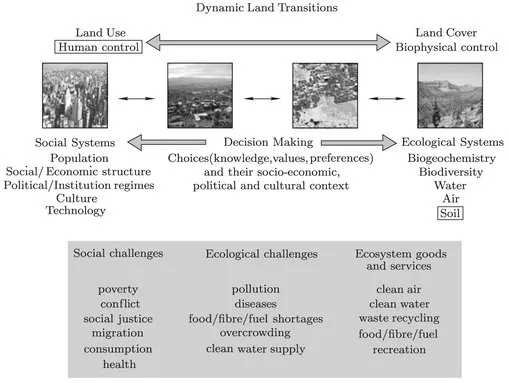
Soil and Plant Analysis for Forest Ecosystem Characterization
- 240 pages
- English
- ePUB (mobile friendly)
- Available on iOS & Android
Soil and Plant Analysis for Forest Ecosystem Characterization
About This Book
This handbook provides an overview of physical, chemical and biological methods used to analyze soils and plant tissue using an ecosystem perspective. The current emphasis on climate change has recognized the importance of including soil carbon as part of our carbon budgets. Methods to assess soils must be ecosystem based if they are to have utility for policy makers and managers wanting to change soil carbon and nutrient pools. Most of the texts on soil analyis treat agriculture and not forest soils and these methods do not transfer readily to forests because of their different chemistry and physical properties. This manual presents methods for soil and plant analysis with the ecosystem level approach that will reduce the risk that poor management decisions will be made in forests. This manual was intended for the instructors that teach students soil and plant analyses; however it can also be used by the research laboratories and by environmental scientists. The laboratory procedures in this manual are outlined in easy-to-follow steps and frequently accompanied with examples of calculations, questions to answer, and also a blank data sheet to use. These methods used in this manual can be used on soil and plant tissues found in agricultural, horticulture, forestry, urban, and natural lands.
Frequently asked questions
Information
Part I
Context of Soil and Plant Analysis
dp n="22" folio="" ? dp n="23" folio="" ?Chapter 1
Overview of Soil and Plant Analysis for Forest Ecosystems
- – More than 4,000 years before the current epoch the Sumerians of Mesopotamia (modern day Iraq and portions of Syria, Turkey and Iran) cut down cedar forests in the mountains to build their civilization. The hillsides and mountainous areas were bared and the salt-rich sedimentary rocks of the north rapidly eroded into their agricultural fields. This erosion, plus the salts that were transported to their lands, decreased agricultural production by 42% [3],[4]. This is the first recorded case of erosion resulting from land-use activities contributing to the collapse of a civilization [5].
- – The Nazca people of Peru lived in a dry forest area dominated by Prosopis pallid. This tree played a vital role in maintaining the habitat because its extensive roots pumped water from deep aquifers to the surface of the ground. To expand their agricultural fields, they cut down the trees. This deforestation was followed by a mega El Niño event that hit the southern coast of Peru in about 500 CE and brought excess precipitation. The Nazca’s agricultural fields were washed away because the soil’s stability was lost without the stabilizing effect of the P. pallid forests [6].
 Fig. 1.1 Factors of human land uses and their influences on our natural ecological systems including soils (modified from Global Land Project [2]).
Fig. 1.1 Factors of human land uses and their influences on our natural ecological systems including soils (modified from Global Land Project [2]). - – The civilization living on Easter Island (off the western coast of South America) collapsed around 900 CE. One theory suggested that they also collapsed because of deforestation that caused soil erosion during rain and windstorms [7]. This deforestation also caused the loss of soil carbon and the leaching of soil nutrients so that agricultural production collapsed [7]. Deforestation was a result of a rivalry between clans based on which clan could sculpt and transport the largest statue to their territory (immense 8 meter high stone statues called moai). According to Diamond [7], trees from their forests were cut to build massive sleds to hold the statues while fibrous tree bark was used to make ropes to pull each statue from the quarry to its intended site. The size of these statues required from 50 to 500 people to move them.
- – The Maya civilization (situated in the southern part of Mexico and large parts of Central America) collapsed between 1,020 and 1,100 CE after an extended period of drought [8]. This was preceded by “anomalously high rainfall, which favored unprecedented population expansion and the proliferation of political centers between 440 and 660 CE” [8]. This period of population expansion and economic development resulted in over-exploitation of their forests to build their economies. By losing their forests, they lost the buffering that forests would have provided them against the drought.
Table of contents
- Ecosystem Science and Applications
- Title Page
- Copyright Page
- Acknowledgments
- Acronyms
- Table of Contents
- List of Tables
- Table of Figures
- Table of Contents
- Part I - Context of Soil and Plant Analysis
- Part II - Introductory Methods in Soil and Plant Analyses
- Part III - Soil Physical, Chemical and Biological Analyses
- Appendices
- References
- Subject Index